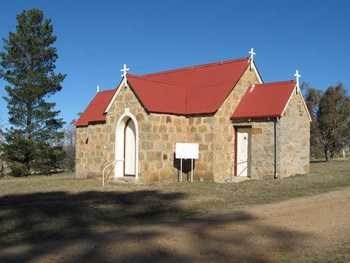 Gegedzerick Cemetery is 2 kilometres east of Berridale, a town located between Cooma and Jindabyne. The cemetery is located on the same land as St Marys Anglican Church built in 1849.
Gegedzerick Cemetery is 2 kilometres east of Berridale, a town located between Cooma and Jindabyne. The cemetery is located on the same land as St Marys Anglican Church built in 1849.
In 1827 Richard Brooks first occupied 15,000 hectares of land at Gegedzerick where he grazed cattle and sheep, the run was located northeast of Berridale. By the late 1830’s virtually the whole of the Monaro was taken up with squatting runs occupied by Europeans.
In the 1860’s the first settler was by the name of William Oliver he named his run of land ‘Berridale’ after his birth place, Berriedale, Caithness, Scotland. In 1869 the Post Office was established and Oliver built a two story granite store in 1870 which later became the Berridale Inn, his descendants still live in and around Berridale. The gravesites of these original settlers and descendants are located in the old Anglican section of the cemetery.
The denominational sections of the cemetery are Catholic, Anglican, Presbyterian, Independent and Jewish. Grave sites at the Gegedzerick cemetery can be purchased as a single depth or double depth
There is also a columbarium which provides niches for the placement of ashes. Plaques can be purchased through a monumental mason. Ashes can be placed in an existing grave site, details of the deceased must be given to Council for the maintenance and upkeep of our records.
Plots and niches can be pre purchased and a right of burial is issued which entitles the holder of the right to be interred in a chosen plot.
Details of the deceased must be given to Council for the maintenance and upkeep of our register.
Right of Burials and Placement of Ashes applications forms are available from council.